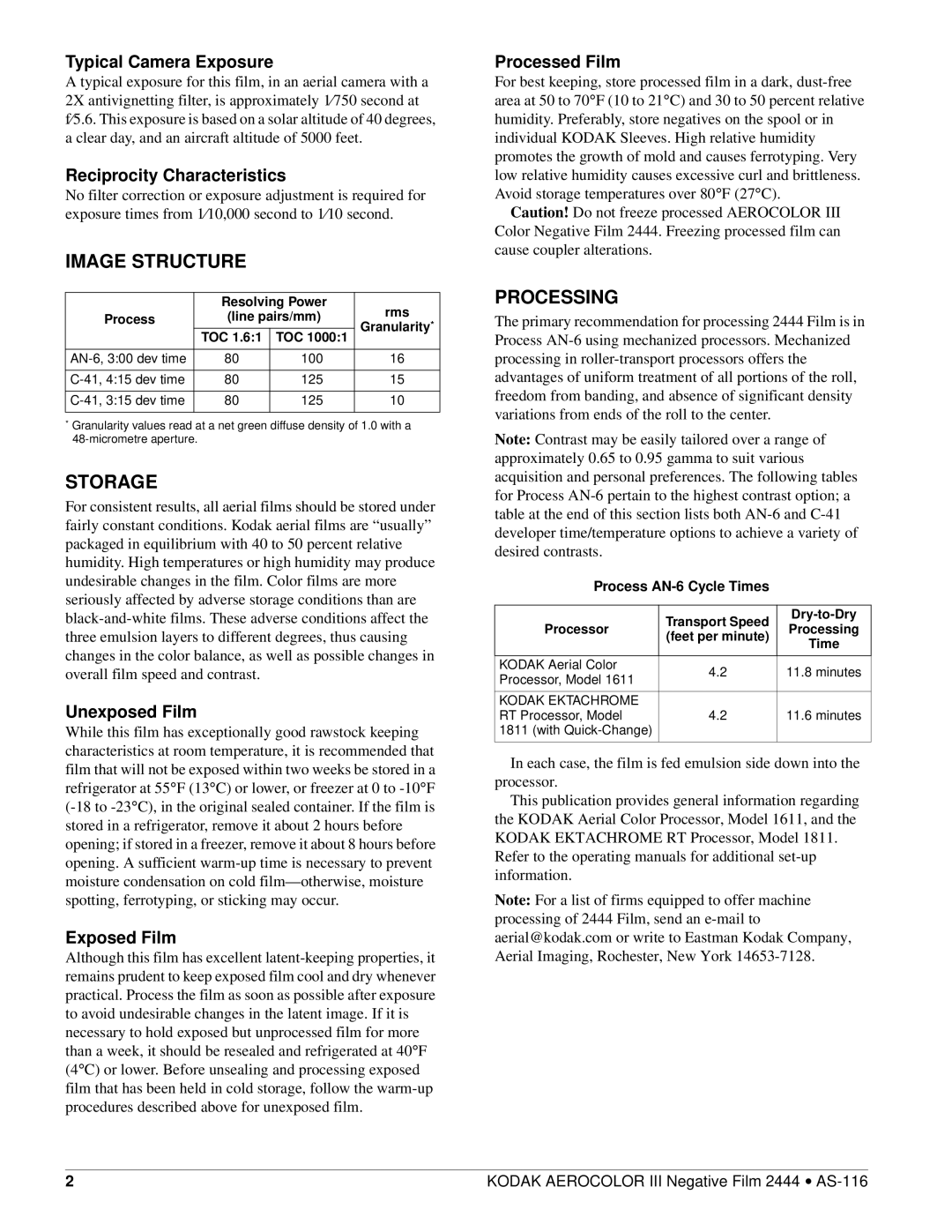Typical Camera Exposure
A typical exposure for this film, in an aerial camera with a 2X antivignetting filter, is approximately 1⁄750 second at f⁄5.6. This exposure is based on a solar altitude of 40 degrees, a clear day, and an aircraft altitude of 5000 feet.
Reciprocity Characteristics
No filter correction or exposure adjustment is required for exposure times from 1⁄10,000 second to 1⁄10 second.
IMAGE STRUCTURE
| Resolving Power | rms | ||
Process | (line pairs/mm) | |||
Granularity* | ||||
| TOC 1.6:1 | TOC 1000:1 | ||
|
| |||
|
|
|
| |
80 | 100 | 16 | ||
|
|
|
| |
80 | 125 | 15 | ||
|
|
|
| |
80 | 125 | 10 | ||
|
|
|
| |
*Granularity values read at a net green diffuse density of 1.0 with a
STORAGE
For consistent results, all aerial films should be stored under fairly constant conditions. Kodak aerial films are “usually” packaged in equilibrium with 40 to 50 percent relative humidity. High temperatures or high humidity may produce undesirable changes in the film. Color films are more seriously affected by adverse storage conditions than are
Unexposed Film
While this film has exceptionally good rawstock keeping characteristics at room temperature, it is recommended that film that will not be exposed within two weeks be stored in a refrigerator at 55°F (13°C) or lower, or freezer at 0 to
Exposed Film
Although this film has excellent
Processed Film
For best keeping, store processed film in a dark,
Caution! Do not freeze processed AEROCOLOR III Color Negative Film 2444. Freezing processed film can cause coupler alterations.
PROCESSING
The primary recommendation for processing 2444 Film is in Process
Note: Contrast may be easily tailored over a range of approximately 0.65 to 0.95 gamma to suit various acquisition and personal preferences. The following tables for Process
Process AN-6 Cycle Times
| Transport Speed |
| |
Processor | Processing | ||
(feet per minute) | |||
| Time | ||
|
| ||
|
|
| |
KODAK Aerial Color | 4.2 | 11.8 minutes | |
Processor, Model 1611 | |||
|
| ||
|
|
| |
KODAK EKTACHROME |
|
| |
RT Processor, Model | 4.2 | 11.6 minutes | |
1811 (with |
|
| |
|
|
|
In each case, the film is fed emulsion side down into the processor.
This publication provides general information regarding the KODAK Aerial Color Processor, Model 1611, and the KODAK EKTACHROME RT Processor, Model 1811.
Refer to the operating manuals for additional
Note: For a list of firms equipped to offer machine processing of 2444 Film, send an
2 | KODAK AEROCOLOR III Negative Film 2444 • |
